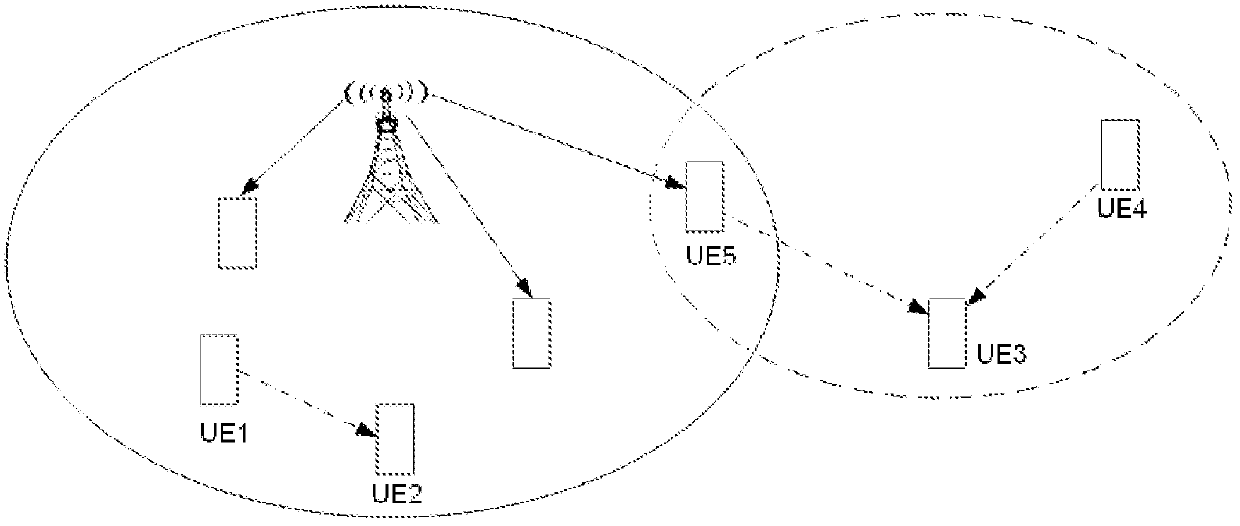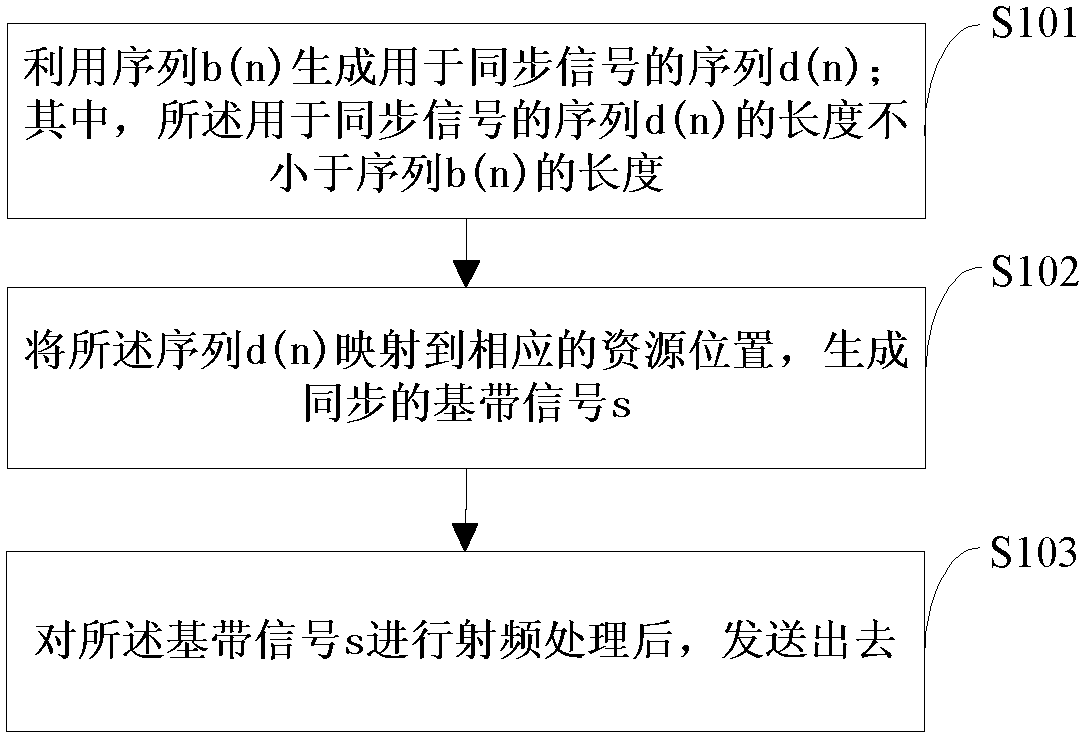A signal transmission method and device for synchronization
A signal transmission device and synchronization signal technology, applied in the field of communication, can solve the problems of D2D system signal detection errors and reduced communication performance of the communication system, etc.
- Summary
- Abstract
- Description
- Claims
- Application Information
AI Technical Summary
Problems solved by technology
Method used
Image
Examples
Embodiment 2
[0148] In the method described in Embodiment 2 of the present invention, the length of the generated sequence for the synchronization signal is an odd number, and the method can be directly applied to a time domain scenario or a frequency domain scenario using multi-carrier modulation.
[0149] Specifically, in Embodiment 2, the generating sequence d(n) by using sequence b(n) is specifically:
[0150]
[0151] Wherein, b(n), n=0, 1,..., L-1; L is an odd number.
[0152] It can be seen that b(n) is an odd sequence of length L, and the sequence b(n) is used to generate an even sequence d(n) of length (L+1). The length of the sequence d(n) is greater than the length of the sequence b(n).
[0153] However, in the prior art, the PSS generates an even sequence with a length of L−1 from an odd sequence with a length of L. It can be seen that the synchronization signal finally obtained in the embodiment of the present invention is different from the PSS.
[0154] Further, the seq...
Embodiment 3
[0228] In the method described in Embodiment 3 of the present invention, the length of the generated sequence for the synchronization signal is an even number, and the method can be directly applied to a time domain scenario or a frequency domain SC-FDMA (Single-carrier Frequency-Division Multiple Access, single carrier frequency division multiple access) modulation scenario.
[0229] Specifically, in the third embodiment, the generating sequence d(n) by using the sequence b(n) is specifically:
[0230] d(n)=b(n),n=0,1,...,L-1 (18)
[0231] Wherein, L is an even number.
[0232] In the third embodiment of the present invention, the lengths of the sequence b(n) and the sequence d(n) are both L.
[0233] Further, the sequence b(n) may be a perfect sequence. The perfect sequence is the same as that described in Example 2. Specifically, the perfect sequence b(n) may specifically be: a ZC sequence or a GCL sequence.
[0234] Specifically, when the ZC sequence is used as the se...
Embodiment 4
[0293] In Embodiment 4 of the present invention, the method for generating sequence d(n) is the same as Embodiment 2 of the present invention, using odd sequence b(n) of length L to generate even sequence d(n) of length (L+1). Only a brief introduction is given below, and the specific generation process is the same as that described in Embodiment 2, and will not be repeated here.
[0294] Specifically, in Embodiment 4, the generating sequence d(n) by using sequence b(n) is specifically:
[0295]
[0296] Wherein, b(n), n=0, 1,..., L-1; L is an odd number.
[0297] It can be seen that b(n) is a sequence of length L, and the sequence b(n) is used to generate d(n) of length (L+1). The length of the sequence d(n) is greater than the length of the sequence b(n).
[0298] Thus, the synchronization signal finally obtained in the embodiment of the present invention is different from the PSS.
[0299] In the method described in Embodiment 4 of the present invention, the perfect s...
PUM
 Login to View More
Login to View More Abstract
Description
Claims
Application Information
 Login to View More
Login to View More - R&D
- Intellectual Property
- Life Sciences
- Materials
- Tech Scout
- Unparalleled Data Quality
- Higher Quality Content
- 60% Fewer Hallucinations
Browse by: Latest US Patents, China's latest patents, Technical Efficacy Thesaurus, Application Domain, Technology Topic, Popular Technical Reports.
© 2025 PatSnap. All rights reserved.Legal|Privacy policy|Modern Slavery Act Transparency Statement|Sitemap|About US| Contact US: help@patsnap.com



